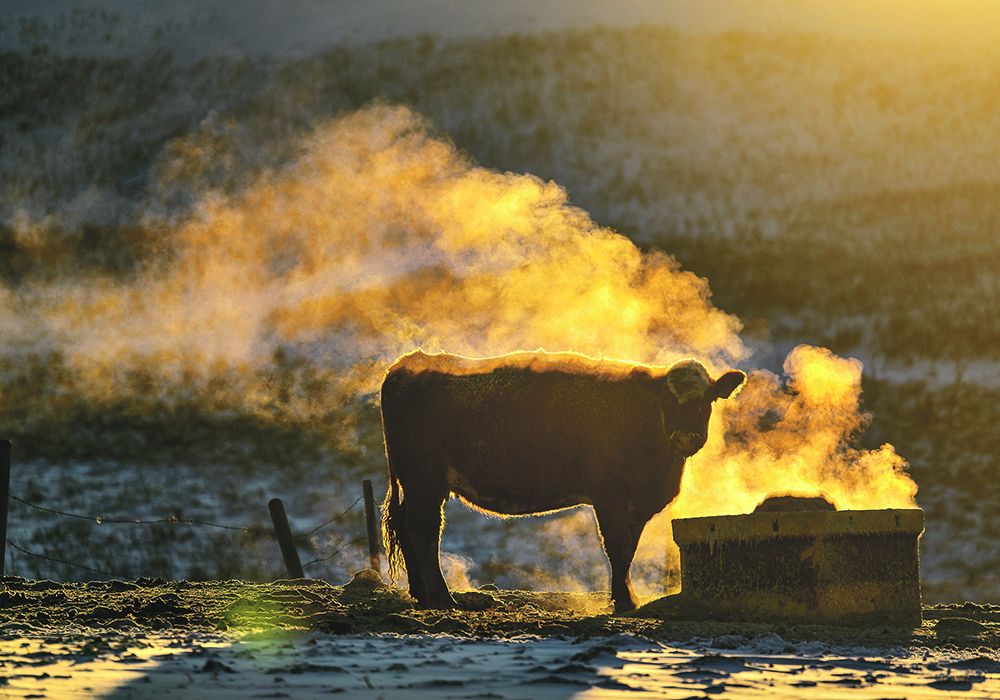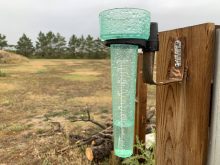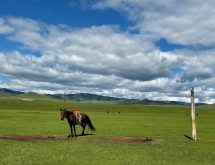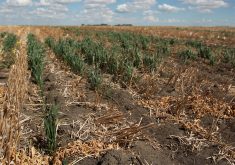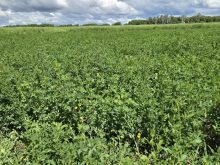MEDICINE HAT — Poor grazing conditions last summer due to drought may make cattle especially prone to this winter’s extreme cold conditions, according to a Medicine Hat veterinarian specializing in livestock.
Temperatures across Alberta dipped below -30 C in mid-January following a season of poor growing conditions across the southeastern rangeland portion of the province and stretching into southwestern Saskatchewan.
Dr. Krista Dayman with Badlands Veterinarian Services said this combination has seen some cows feeling the effects of cold more than others.
Read Also
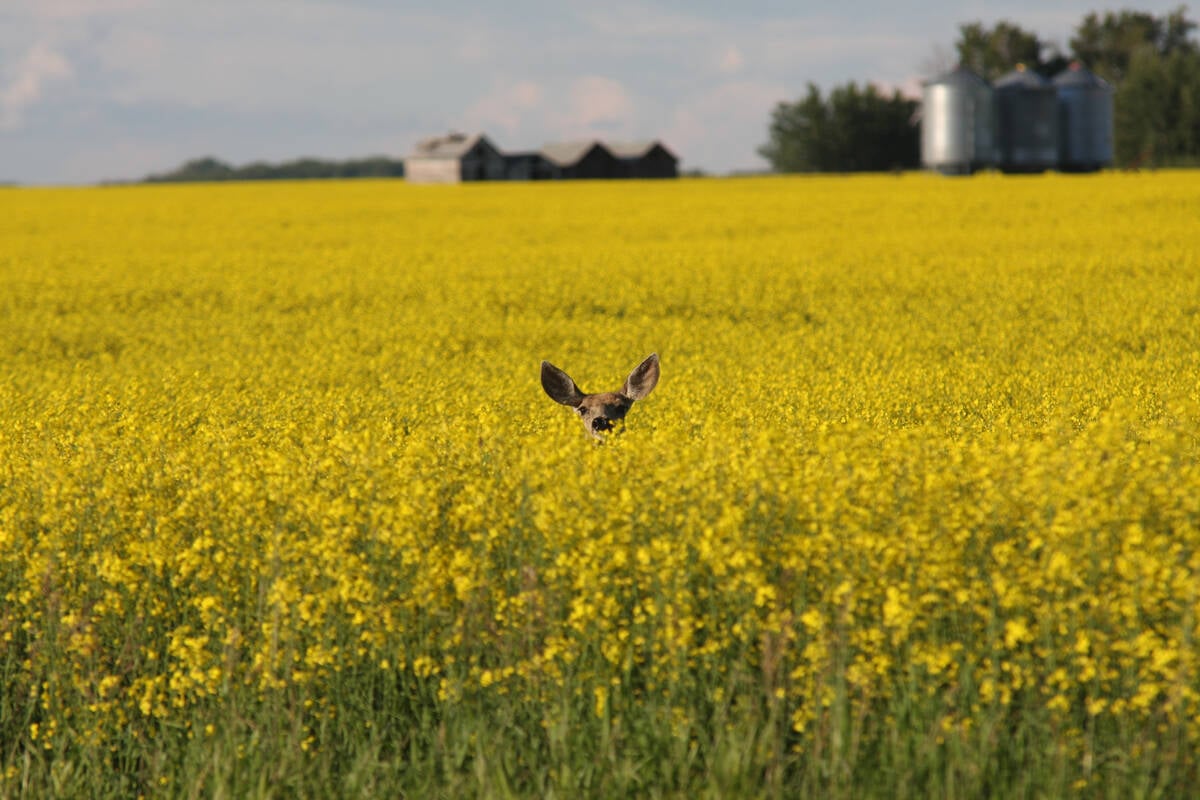
Drones now used to assess wildlife crop damage in Saskatchewan
Wildlife damage in Saskatchewan crops is now assessed by drones and artificial intelligence.
“Body condition scores on cattle have been dropping because our feed quality hasn’t been there, and skinnier cows are more susceptible to hypothermia,” said Dayman.
“In this last cold snap, I did do a couple of post-mortems where that was the case, where cows died because they had essentially heart attacks because of hypothermia.”
As well, frozen troughs can lead to impaction if cattle aren’t able to adequately access water sources, she added.
“They are trying to eat and eat and eat to keep warm, but if they don’t have an adequate water source, it essentially gives them constipation, it blocks up their gastrointestinal system,” said Dayman.
Herd health across the arid rangeland of the Palliser’s Triangle is facing challenges due to several years of drought conditions, she said.
“Based on what I saw this fall preg checking, body scores are dropping, which makes it that much more vital to pay attention to nutrition, vitamin and mineral supplementation to make sure we’re supplementing those cows correctly,” Dayman said.
She said she’s seen the number of open cows increase a couple of percentage points higher than normal over the last several months.
However, Dayman added that different producers may be facing various conditions specific to their location.
Under current conditions, Dayman is recommending collecting blood and liver tests from a sample size of herds to determine possible vitamin or mineral deficiencies. Such testing will allow for specific targeting of the deficiency, which can also be less expensive.
“There are some pretty good mineral tubs out there, but mineral supplementation companies kind of promise everything,” she said.
“For a lot of producers, there can be just one thing that’s deficient. If you supplement with a loose mineral, that can be a lot more cost effective than buying the gold-standard, most expensive mineral tub.”
Dayman also stressed the need for feed testing in light of the large amount of feed imported or sourced from outside usual suppliers due to drought. Those tests should include total digestible nutrition and energy as well as accrued protein.
However, producers are in a tough place right now if they are having issues with herd health and trying to make up ground going into the spring calving season.
“It is very hard to try to get them to gain weight in their third trimester of pregnancy,” said Dayman.
She said she has come across incidents of dystocia, or abnormal fetal size, when a cow has been given heavy feed during that last trimester.
Even if cows visually appear to look healthy, Dayman said current conditions might make it a good idea to more closely inspect herds.
“You look at the cows right now and they look fat and fluffy but that’s also because it’s cold and those hairs are standing on end,” she said.
“You really have to get them into a chute and put your hands on them to see where their condition is sitting at.”
The cold snap is forecast to break leading into February with recent moisture across southern Alberta and Saskatchewan providing relief to bone dry conditions in the region.


